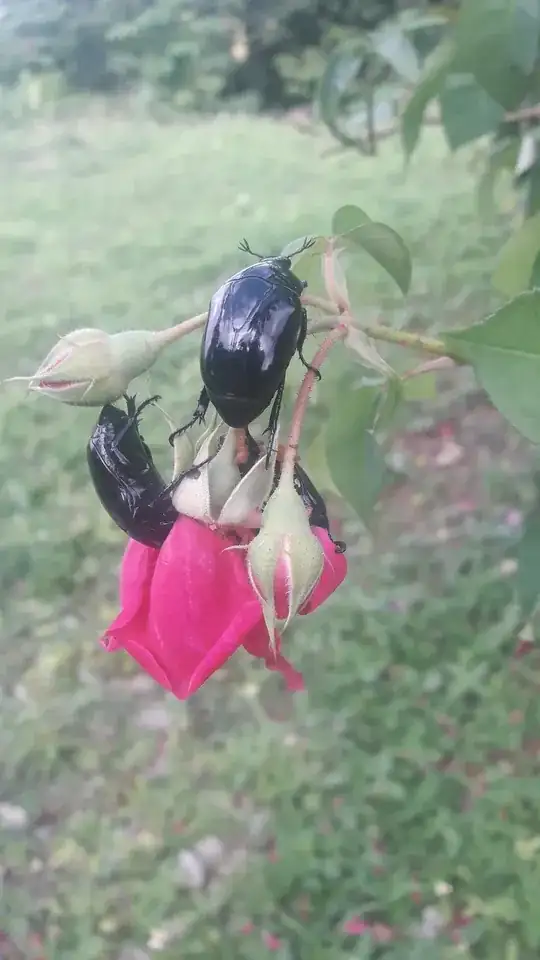I am noticing some black beetle looking pests on my roses and im trying to find out how to prevent them from destroying my rose plants as they are swarming them and destroying their petals and stems.. here is a picture of what they look like.
-
In what region do you live? I would guess Southern Hemisphere or maybe the Mediterranean area at this time of year, but where? – Jurp Dec 29 '22 at 17:28
-
Jamaica so Caribbean Region – Duval Pearson III Dec 29 '22 at 17:43
-
Big! and sort of Darth Vaderish... – kevinskio Dec 29 '22 at 18:12
-
That looks like a kind of scarab beetle, which is a large family of beetles (~1700 species). Most of the members of the family don't feed on flowers or leaves, but some do. Have you actually seen it chewing away on the rose? Because the photo you posted does not show any damage on the plant. There is a Biology stack that may be more helpful than this one. – Jurp Dec 29 '22 at 21:29
1 Answers
Pelidnota lugubris
Just identifying on the fact that it is shiny, and has three segments on the end of the antennae.
Not sure what they are doing there.
UPDATE
According to the US National Library of Medicine within the National Institutes of Health, as published on the Zookeys site ('Life history and biology' section, emphasis mine):
Immature life stages are known for only a handful of the pelidnotine genera including Homonyx, Chrysophora, and Pelidnota. Based on life history studies, life cycles are one to two years in duration. Larvae are sapro-xylophagous and feed on dry, rotten wood (Pelidnota virescens), hollow trunks and tree stumps (Pelidnota punctata; Epichalcoplethis velutipes), organic matter in the soil, and rotten roots. One species, Pelidnota filippiniae is a significant defoliator and high numbers could contribute to plantation damage.
I think the last named species is Asian, probably found in the Philipines, given its specific name.
It doesn't sound like the large fellows in the photo will defoliate the plant or harm any plant roots. I think they were probably there because they'd just begun their adult life cycle.
- 18,009
- 1
- 15
- 36
- 1,845
- 1
- 6
- 20
-
I don't know if the species is correct because it's usually found in Southern California and Arizona, but I'm sure that the genus is. It would be helpful if you knew what they feed on as adults, and if their grubs are damaging to plant roots. – Jurp Jan 06 '23 at 12:26
-
Mexico too, just giving a starting point for a better search. – Polypipe Wrangler Jan 06 '23 at 12:28
-
According to the US Dept of Interior Zookeys site, "Immature life stages are known for only a handful of the pelidnotine genera including Homonyx Guérin-Méneville, Chrysophora Dejean, and Pelidnota. Based on life history studies, life cycles are one to two years in duration. Larvae are sapro-xylophagous and feed on dry, rotten wood (Pelidnota virescens), hollow trunks and tree stumps (P. punctata; Epichalcoplethis velutipes), organic matter in the soil, and rotten roots. One species, P. filippiniae is a significant defoliator and high numbers could contribute to plantation damage" – Jurp Jan 06 '23 at 12:34
-
Doesn't sound like the large fellows in the photo will defoliate the plant or harm any plant roots. I think they were probably there because they'd just begun their adult life cycle. Would you like me to add the quote and reference to your answer? – Jurp Jan 06 '23 at 12:36
-
If you could be so kind, putting your info in (or making a new answer) would be good. I could never get away with an incomplete identification on the Biology exchange. – Polypipe Wrangler Jan 06 '23 at 12:38
